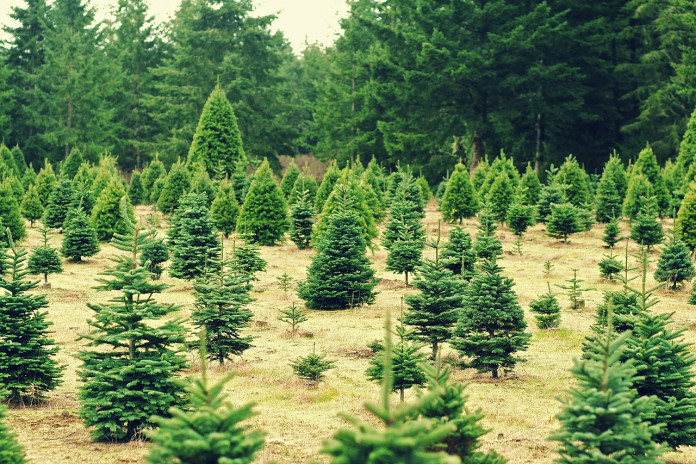Want to start a new tradition this Christmas?
Purchasing a living tree to replant is another way to enjoy the ambiance of a real tree without having to discard it after the holiday season. However, successfully transplanting a Christmas tree can be tricky.
There are four major factors that affect the survival and growth living Christmas trees.
- The chosen tree species is not intended for the area it is planted.
- A larger tree will suffer more transplant shock than smaller options.
- The tree dried out between watering, while it was displayed inside.
- It was displayed indoors long enough to lose winter hardiness and then faced freezing temperatures when it was planted outside.
Selection
Choosing the right tree is the first factor that will determine your tree’s chances of survival. The best place to start when considering adding a tree to your landscape is to consider selecting a native variety. Some Christmas tree options that are native to Ohio include the Austrian Pine, Scotch Pine, Eastern White Pine, Red Pine and Norway Spruce. It might not be the Fraser fir or blue spruce you’ve had in past years, but remember it will have a better chance of survival.
The second thing you want to consider is the health of the tree based on its appearance and root ball. You want to pick a healthy green tree with a lot of pliability in its needles and minimal shedding. After you’re satisfied with the appearance of the tree, check to be sure its root ball is firm as trees with loose or pancaked root balls have a slim chance of survival.
The last thing to think about is size. You don’t want to purchase a tree that is hard to manage and risk damaging it or too big to fit into your landscape.
Once you’ve purchased you Christmas tree, be careful not to damage its root system by dropping it on its root ball, carrying it by the trunk or letting it dry out.
It will benefit you to visit a balled-and-burlapped tree farm earlier in the season to ensure you get the best selection. You can store your tree outside until it’s closer to Christmas. Just be sure to keep the root ball moist and covered with mulch.
Home care
Living Christmas trees can become stressed from the low humidity and high temperatures inside houses. To give your tree the best chance at survival, follow these steps:
- Let your tree adjust by moving it to an unheated, but sheltered area for a couple of days before bringing it inside.
- Only keep your tree inside for seven to 10 days. Longer periods of warm temperature reduce winter hardiness.
- Set your tree up away from any heat sources in the coolest possible location and limit the number of lights you put on it.
- Make sure your tree is positioned in natural light.
- To keep the tree from settling in water, place the root ball in a tub with two inches of gravel lining the bottom.
- Make sure your root ball is constantly and evenly moist, but not flooded. One technique is to put crushed ice over the top of the root ball.
- Make sure you’re giving your tree the right amount of water. One method uses a small pipe placed vertically on one of the inside walls of the tub, so you can check the water level with a dip stick. If there is water at the bottom of the pipe, the tree doesn’t need watered.
- Water your tree regularly, but don’t flood it. There should only be an inch or two of water at the bottom of your tub rather than being filled to the brim.
Planting
After you’ve enjoyed your Christmas tree and are ready to start thinking about planting it outside, place it back in an unheated, sheltered area for several days to readjust it to outdoor temperatures. The sooner you plant your tree after the holidays, the better.
The next step will be selecting a planting site. Look for a spot that has well-drained soil, full sun and big enough for the tree when it is full grown.
Once you’re ready to dig the hole, plan to make it the same depth but five times wider than the root ball. Don’t plant your tree too deep. It may also be helpful to plan ahead and dig your hole before the ground is frozen.
Before placing your tree in the hole, remove the burlap around the root ball completely to prevent girdling and drying out. After the root ball is in the hole, fill in around the base of the tree with loosened soil. For the best results, backfill in stages and gently firm each layer of soil as you go. Then water the tree to eliminate air pockets and settle the soil.
If the tree is in a windy location anchor the tree to the ground by tying and staking it in three separate spots around the tree.
Do not fertilize your tree until spring after it has started growing and be sure not to over fertilize it during the first year to give the roots time to become well established.
Related Content
- How to take care of your Christmas tree
- 11 Christmas tree facts you may not know (infographic)
- Deck the halls: Christmas tree buying guide
- 6 tips for Christmas tree care
- Recycle your Christmas tree after the holidays
- The perfect tree
- Family tradition, trees and rescue











